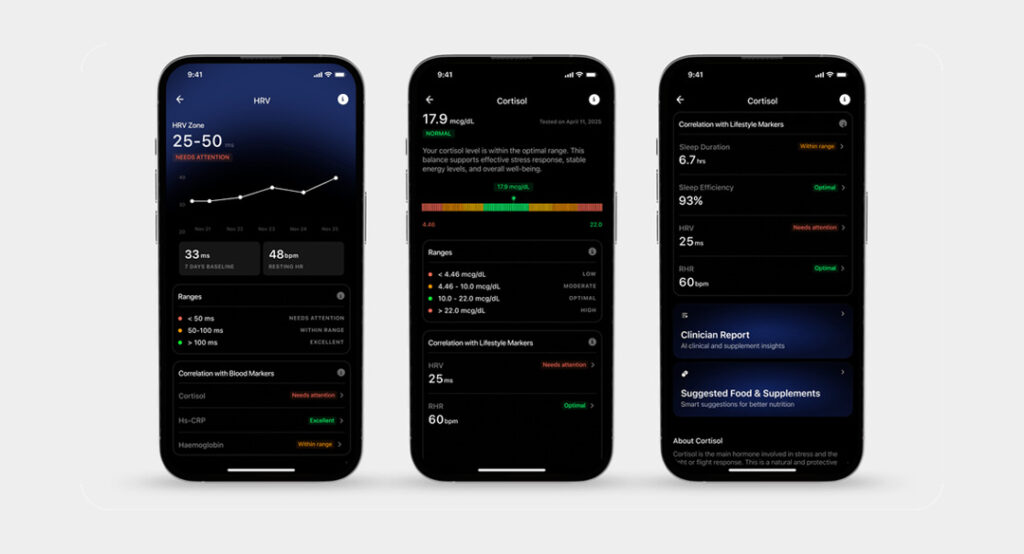Gestational diabetes refers to diabetes diagnosed for the first time during pregnancy (gestation). It’s said to affect up to 10% of women in the U.S. each year, with or without a history of diabetes or pre-diabetes.
There are two types of gestational diabetes—women with class A1 can manage it through exercise and diet and those with class A2 might need to take insulin or other medications.
It’s believed that gestational diabetes can go away after you give birth, but it can be detrimental to the baby’s health and raises the mother’s risk of getting type 2 diabetes. Women with gestational diabetes may not have symptoms. Routine screening can help identify it.
Some common symptoms include being thirstier, hungrier and eating more and peeing more than usual.

Highlights
- A condition where blood glucose levels surge during pregnancy is called gestational diabetes. Pregnant women with gestational diabetes may not have symptoms. Routine screening can help identify it,
- With gestational diabetes, the chance of developing type 2 diabetes is much higher,
- High blood sugar can cause problems for the mother and the baby, including an increased likelihood of needing a C-section to deliver.
Why do blood sugar levels become higher during pregnancy?
When you eat, the pancreas releases insulin, a hormone that helps transport sugar, known as glucose, from the blood to the cells, which then use it for energy.
During pregnancy, the placenta makes hormones that cause glucose to accumulate in the blood. Normally, the pancreas can send enough insulin to take care of that, but if the body stops making insulin or if your blood sugar rises, it is possible to get gestational diabetes.
What causes gestational diabetes?
The following factors can put one at a higher risk of developing gestational diabetes:
- Being overweight before you get pregnant
- Being of Hispanic, Alaska Native, Native American, Pacific Islander, African-American or Asian descent
- Being older than 25
- Having polycystic ovary syndrome (PCOS) or any other health conditions linked with insulin
- Having high blood sugar levels that fall in the prediabetes category
- Having a blood relative with diabetes
- Having had gestational diabetes before
- Having heart disease, high blood pressure high cholesterol or other such medical complications
- Having had a miscarriage
- Being older than 25 years of age
- Having given birth to a baby weighing more than 9 pounds.
Gestational diabetes that’s not carefully managed can lead to high blood sugar levels. High blood sugar can cause problems for the mother and the baby, including an increased likelihood of needing a C-section to deliver.
Gestational diabetes treatment
If you have gestational diabetes, treatment is required as soon as possible to keep yourself and the baby healthy. A treatment recommended by a doctor usually involves:
- Checking blood sugar levels four or more times a day
- Checking urine for ketones, which are chemicals that indicate that your blood sugar isn’t under control, signifying diabetes
- Maintaining an exercise routine
- Eating a healthy diet
Normally, the doctor will keep track of the mother’s weight and the baby’s development and insulin might be provided to keep blood sugar under control.
With gestational diabetes, the chance of developing type 2 diabetes is much higher. However, there are enough steps you can take to help prevent that. About 6 weeks after childbirth, blood sugar levels should return to normal for you. Follow-up tests every three years are recommended.
Overall, to lower your risk, you can try and keep your weight in a healthy range; consult your doctor to determine what that is for you depending on your vitals, age, height and so on.
It’s important to bear in mind that having another baby increases the chances of getting gestational diabetes again. Consult a doctor to know if there are lifestyle changes you can make to help you prevent that.
Ideal levels of blood sugar for pregnant women
The American Diabetes Association recommends the following targets for pregnant women who test their blood sugar:
- Before a meal: 95 milligrams per decilitre (mg/dL) or less
- An hour after a meal: 140 mg/dL or less
- Two hours after a meal: 120 mg/dL or less

Simple steps to maintain blood sugar levels during pregnancy
There isn’t a straightforward guarantee or series of steps that can entirely prevent diabetes, but healthier habits adopted before pregnancy do contribute to a decreased risk of developing gestational diabetes.
If you’ve had it once, these healthier choices may reduce your risk of developing it again or developing type 2 diabetes in the future:
- Eating healthy foods: Choosing foods high in fibre and low in fat and calories while focusing on vegetables, fruits and whole grains.
You can aim for a variety of nutrient-dense vegetables and low glycemic index fruits that will help you achieve your goals without compromising on nutrition or taste. Watching portion sizes is an important aspect of this.
- Keeping active: Maintaining an exercise routine before and after pregnancy can help protect from developing gestational diabetes.
- 30 minutes a day of moderate activity 4-5 times a week, such as a brisk walk daily, riding a bike, swimming laps, short bursts of activity like taking the stairs or walking/cycling when running errands, all contribute to higher daily activity levels.
- Starting the pregnancy at a healthy weight: If pregnancy is on the cards for you, losing weight prior may help you have a healthier pregnancy.
Focusing on keeping a regular exercise routine and eating patterns to remain at an ideal weight can support you through a pregnancy in a better manner.
- Maintaining a healthy weight during the pregnancy: Gaining extra weight during pregnancy is normal and healthy but gaining too much weight over a short span of time can increase the risk of gestational diabetes.
Consulting a doctor about the ideal amount of weight gain during pregnancy is recommended.
- Other diet tips: Eating three meals and 2-3 snacks a day can help keep blood sugar levels in check. Eating too much in one go raises blood sugar levels, but getting in steady nutrition is also necessary since the baby relies on the mother for nutrition.
It’s advisable to include starchy food, such as a cup of cooked rice, noodles, potatoes, grain or 2 pieces of bread, with every meal and limiting milk consumption to one 8-ounce cup at a time.
Milk is an important source of calcium, but because it’s liquid, it can be absorbed quickly and lead to high blood sugar levels. Eat only one serving of fruit at a time, since the natural sugars in fruit can lead to a blood sugar spike.
Avoid canned fruit and fruit juice. Choose brown rice, wild rice, barley, whole oats, millet, grain bread and any other whole grains over refined grains like white bread and rice. Include lentils and any type of bean: red, black, garbanzo, pinto and split peas, etc., since all of these foods are high in fibre and help in keeping blood sugar levels low.
This goes without saying but avoiding processed foods high in sugar is highly recommended. They contain a lot of fat and sugar and offer very little nutrition.
Not adding honey or syrup to foods is also recommended. Be mindful of products labelled “sugar-free” since they may contain the same amount of carbohydrates as the products made with regular sugar.
Check food labels to find out the amount of total carbohydrates. Maltitol, mannitol, xylitol, isomalt, sorbitol and hydrogenated starch hydrolysate are examples of sugar-alcohols.
Does gestational diabetes affect the baby?
Does gestational diabetes affect the baby?Managing your sugar when pregnant, even while you have gestational diabetes, can ensure a healthier baby. Right after giving birth, the baby’s blood sugars are checked.
Severe episodes of hypoglycemia might cause seizures in the baby although prompt feeding and sometimes an intravenous glucose solution can help return the baby’s blood sugar level to normal.
Having gestational diabetes during pregnancy does increase the chances of the baby being larger than normal. It’s also been linked to jaundice in the baby, although it will get eradicated quickly with treatment.
Although the child, as it gets older, is at a higher risk of developing type 2 diabetes later, a healthy lifestyle, including a balanced diet and lots of physical activity, can reduce that risk.
Conclusion
Gestational diabetes is when a woman is diagnosed with diabetes during pregnancy. Gestational diabetes, like other kinds of diabetes, also causes high blood sugar levels that may affect the mother’s as well as the baby’s health.
Any pregnancy complication can potentially be concerning but there are steps one can take to prevent any long-term or fatal risks. Expectant mothers can control gestational diabetes by exercising daily, eating a healthy, well-balanced diet and, if necessary, by taking prescribed medication.
Keeping blood sugar levels in control can help to keep the baby healthy and prevent a difficult delivery.
With women who develop gestational diabetes, blood sugar levels go back to normal in about six weeks after delivery, but since the risk of developing type 2 diabetes is higher, getting tested for fluctuations in blood sugar levels is highly recommended.
Disclaimer: The contents of this article are for general information and educational purposes only. It neither provides any medical advice nor intends to substitute professional medical opinion on the treatment, diagnosis, prevention or alleviation of any disease, disorder or disability. Always consult with your doctor or qualified healthcare professional about your health condition and/or concerns and before undertaking a new health care regimen including making any dietary or lifestyle changes.
References






